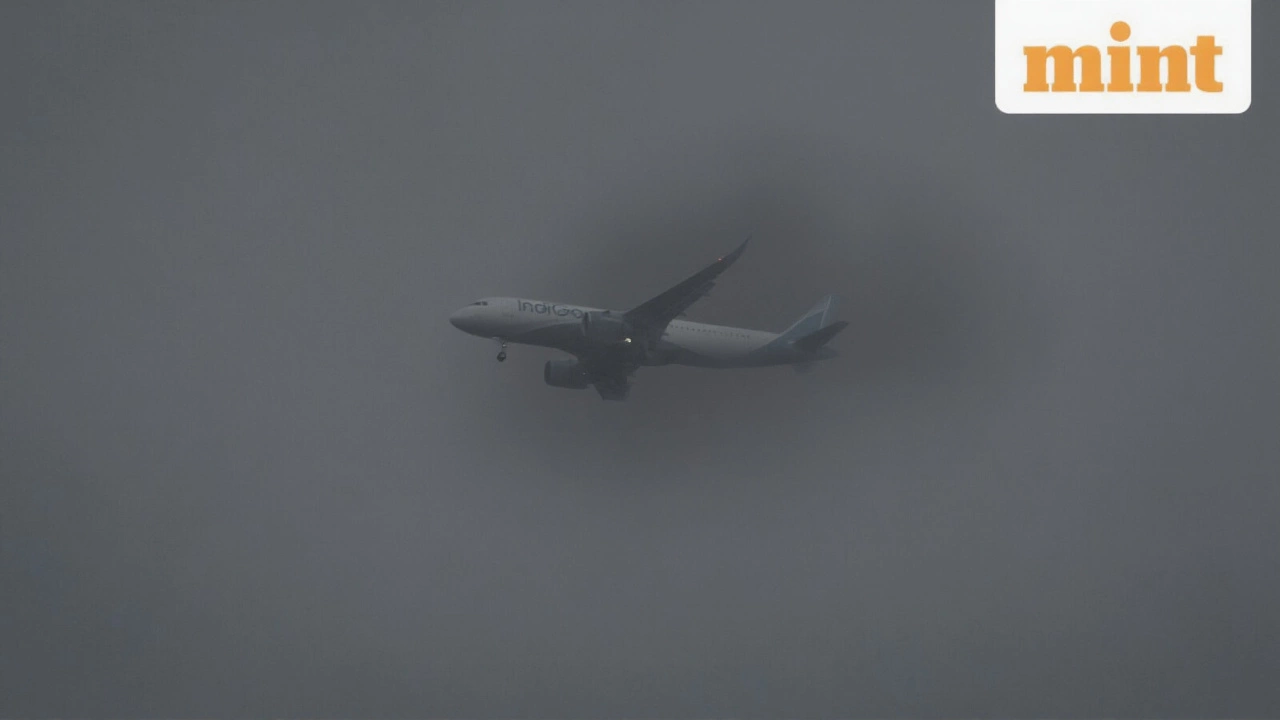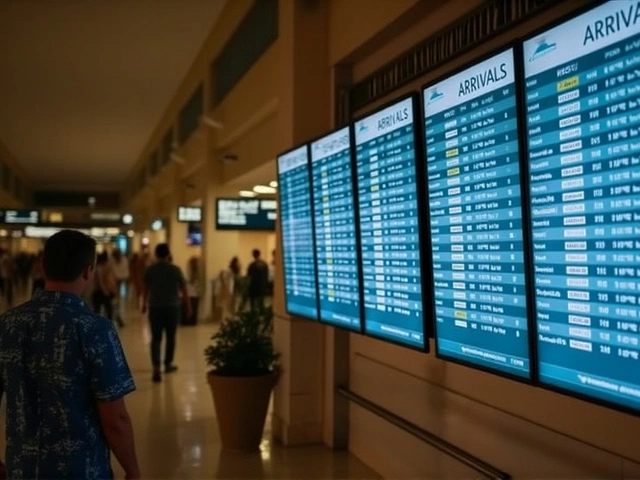When the Olympic Pipeline sprung a leak east of Everett, Washington, on November 11, 2025, no one expected it to become a holiday travel crisis. But by November 19, with BP plc still digging through 200 feet of soil to find the rupture, Washington Governor Bob Ferguson declared a state emergency to keep Seattle-Tacoma International Airport flying. The pipeline, which carries 115,000 barrels of jet fuel daily to SEA and Portland International Airport, was the sole supply line for both. No backups. No alternatives. Just one pipe — and now, it was broken.
How a Single Leak Could Ground a Region
The Olympic Pipeline, built in the 1970s, runs 400 miles from the Canadian border to Portland, with a spur feeding directly into SEA. It’s not just convenient — it’s essential. Airports don’t store enough fuel for more than a week of total shutdown. By November 22, 2025, airport officials warned that without the pipeline, they’d hit federally mandated fuel thresholds that would force flight cancellations. That’s not a guess. That’s a regulation. And it’s not just about convenience — it’s about safety. Planes can’t fly without fuel. Period.BP’s Race Against Time
BP crews worked around the clock with floodlights and heavy excavators, digging down to the damaged section of pipe. They found the leak in a drainage ditch near the Snohomish County line — a sign of a slow, insidious seep, not a catastrophic rupture. That made it harder to pinpoint. “It’s not a geyser,” said one anonymous BP engineer. “It’s a drip that’s been dripping for days.” The company hasn’t given a timeline for repair, but they’ve admitted the damage is “complex,” requiring replacement of over 50 feet of pipe. Meanwhile, the environmental cleanup has already involved more than 1,200 gallons of contaminated soil removed from the site.Airlines Adapt — But Just Barely
Alaska Airlines, headquartered in SeaTac, and Delta Air Lines scrambled. They started trucking in jet fuel from refineries in Oregon and British Columbia — a costly, slow workaround. Each fuel truck carries about 8,000 gallons. To replace a single day’s pipeline delivery, they’d need nearly 15 trucks. And that’s just for SEA. Delta added refueling stops in Boise and Spokane on some long-haul routes. Alaska rerouted a handful of flights to land in Portland, then refueled before continuing to Seattle — adding 45 minutes to each trip.
Emergency Waivers: A Temporary Lifeline
Governor Ferguson’s emergency proclamation, signed on November 19, 2025, waived state limits on how long commercial truck drivers could haul fuel. Normally, drivers are capped at 11 hours of driving per day, with mandatory rest breaks. Now? They could drive up to 14 hours, with only a 10-hour break required after. The waiver lasts 30 days — but could be pulled early if the pipeline restarts. “This isn’t about cutting corners,” Ferguson said. “It’s about keeping people moving.”Why This Matters Beyond the Holidays
The Olympic Pipeline isn’t just for passengers. It fuels medical flights, cargo planes carrying fresh produce from Washington orchards, and military support flights from Joint Base Lewis-McChord. A shutdown could ripple through supply chains. SeaTac handles over 50 million passengers annually — nearly 2 million during the Thanksgiving-to-New-Year window. Even a 10% reduction in flights would mean 200,000 stranded travelers. And while the airport’s storage tanks held enough for five days, by November 22, they were down to 2.3 days’ worth. “We’re not out of the woods,” said SEA’s operations director. “We’re just holding our breath.”
What’s Next? Uncertainty Looms
As of November 22, 2025, no flights were canceled at SEA. But that’s because airlines are burning through their contingency fuel — like draining the last drops from a water bottle. BP says they’re “optimistic” about a fix by late November. But they won’t say when. The Washington State Department of Ecology is monitoring groundwater for contamination, and the Pipeline and Hazardous Materials Safety Administration has launched a full investigation. Meanwhile, lawmakers are quietly asking: Why is one pipeline still the only source for two major airports in 2025?It’s a question that’s been ignored for decades. The Olympic Pipeline was never meant to be the sole lifeline. But infrastructure investments stalled. Alternatives were deemed too expensive. Now, the cost is being paid in delayed flights and stressed workers.
Frequently Asked Questions
How long can Seattle-Tacoma International Airport operate without the Olympic Pipeline?
SEA’s fuel storage capacity is about 1.2 million gallons — enough for roughly 2.3 days of normal operations at current demand. As of November 22, 2025, reserves had dropped to that threshold. Without pipeline delivery, flights would begin being canceled by November 24 or 25 under federal fuel management rules, which require airports to maintain minimum reserves for safety and emergency use.
Why didn’t SEA build a backup fuel supply system?
Cost and geography. Building rail or truck-based fuel terminals at SEA would require over $300 million in infrastructure and land acquisition. The Olympic Pipeline, built in 1971, was considered a permanent solution. Over time, regulatory approvals for alternatives stalled, and airlines relied on the pipeline’s efficiency. No one anticipated a single point of failure — until now.
Are other airports in the Pacific Northwest affected?
Yes. Portland International Airport (PDX) also depends entirely on the Olympic Pipeline for jet fuel. While PDX has slightly more storage capacity, it’s facing the same timeline pressures. As of November 22, 2025, PDX had not canceled flights, but its fuel reserves were also below 3 days. Smaller airports like Bellingham and Yakima are unaffected since they rely on trucked fuel.
What’s being done to prevent this from happening again?
Washington State legislators have begun drafting bills to require airports to maintain dual fuel sources by 2027. The FAA has also signaled it may revise federal guidelines to incentivize backup infrastructure. But progress is slow. The Olympic Pipeline is still under federal jurisdiction, and BP has not committed to funding alternatives. The current crisis may be the wake-up call needed to finally act.
Is the environment at risk from the pipeline leak?
Yes. The leak released an estimated 1,800 gallons of jet fuel into a drainage ditch that feeds into the Snohomish River watershed. The Washington State Department of Ecology has detected low-level hydrocarbon contamination in nearby groundwater. Cleanup is ongoing, but long-term ecological monitoring will be required for at least two years. No drinking water sources have been compromised — yet.
Why are commercial truck drivers allowed to drive longer hours during this emergency?
Under normal state rules, truck drivers hauling fuel are limited to 11 hours of driving per day with mandatory rest breaks. The emergency waiver, signed by Governor Ferguson, allows up to 14 hours of driving with a 10-hour rest period. This is a temporary measure to move fuel faster. It’s been used before during hurricanes and wildfires, but rarely for infrastructure failures. Safety officials say driver fatigue is being monitored, and no violations have been reported.







